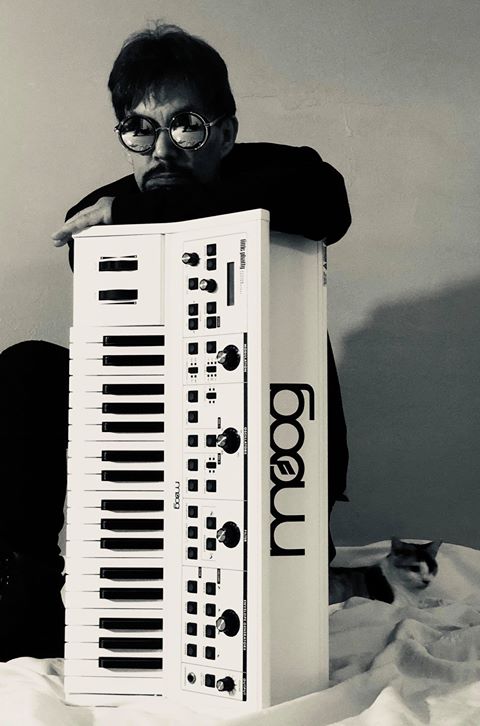
Pinto the cat photobombs this portrait featuring our friend DC Astro and a white Moog Little Phatty.
Had an unexpected guest during my photo shoot!!
This is the best kind of unexpected guest 😸

The Art of Paper is a multi-artist exhibition currently on display Sundaram Tagore Gallery at their Chelsea location. The term “works on paper” often refers to drawing and print, but the medium and can be used in so many more ways. Each of the artists in the show uses paper in a very different way, showcasing its breadth and versatility as a raw material for art.
Korean artist Chun Kwang Young creates fantastic three-dimensional sculptures from mulberry paper. This thin and delicate paper is prized as an artistic

Some are flat and wall-mounted while others are freestanding. But in all cases, they are three-dimensional full of complex depth and texture.
The jagged triangular elements seem sharp, even a bit dangerous up close. But at the same time, they seem fragile, like delicate crystals that could fall apart among touch. When viewing closer, they seem soft, especially as the details of the paper come into view, including the original printed text from the source material. There is something almost science-fiction-y and other-worldly about the result that I find captivating.
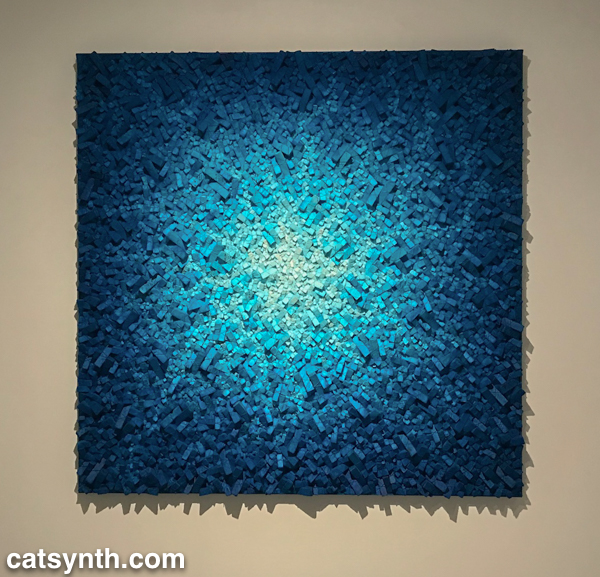
Chun has a simultaneous solo exhibition from his Aggregations at the Brooklyn Museum, which we will be reviewing in a separate article.
The work of Anila Quayyum Agha also uses paper as a basis for sculpture with a very different set of styles, techniques, and sensibilities. She is best known for her works featuring paper laser-cut into large intricate forms. Many of the paper cuts are assembled into cubes placed in immersive spaces with light.

Being in the space of this piece and viewing it from all angles was a captivating experience. It doesn’t seem like paper, but rather intricately carved stone or metal. S
In contrast to Agha’s highly intricate designs, Miya Ando’s work is more subtle and spare. She is known for more abstract work in metal, but she brings that work to paper in her “moonlight” pieces for this show.
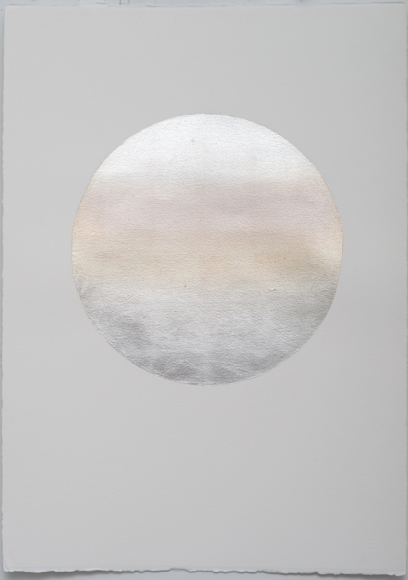
Paper is often white, but it can be many different whites and shades in between those gradations. The subtle changes give the round form a very natural feel in contrast to the stark white background.
There are several more artists in this show, more than we at CatSynth are able to cover in this article. For more information, please visit the gallery’s website. They are located at 547 West 27th Street, and the exhibition will be on display through December 15, 2018.

Cute cat-and-Moog pic from Moog Music, Inc via Instagram 😻
Regram: @archieandfox
Caption: @nan0particle
We at CatSynth took a break from our busy schedule of art, friends, and family in New York to visit the Brooklyn Cat Cafe.

The concept of the “cat cafe” originated in Japan, but has spread around the world, including at least three in New York. Like Cat Town in Oakland, it is an all-volunteer effort focused on finding foster and forever homes for the cats in their care. It is located in a small storefront on Atlantic Avenue in the shadow of the bridges and downtown Brooklyn, but a peek inside reveals a space covered in cats.

Many were napping, like the line above, but they are also quite playful and affectionate. They are, of course, cats.
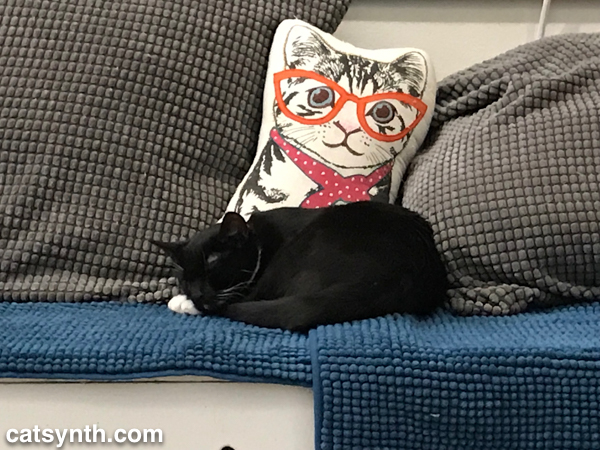
This sweet black kitty greeted me with a nose kisses.
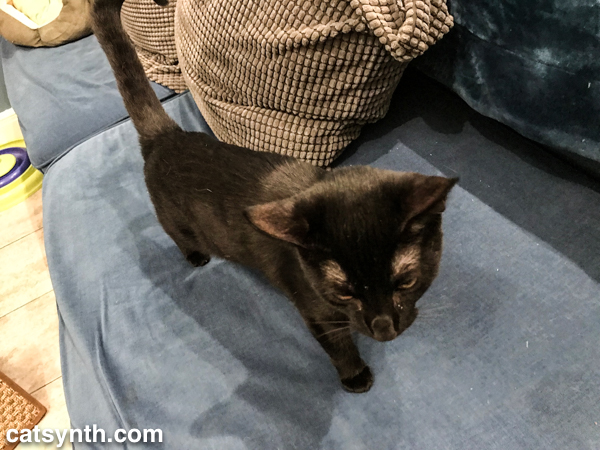
Hilda was perhaps the most playful on this evening, looking visitors in the eyes as she played with various toys. She especially liked this wires dangling from the main table.
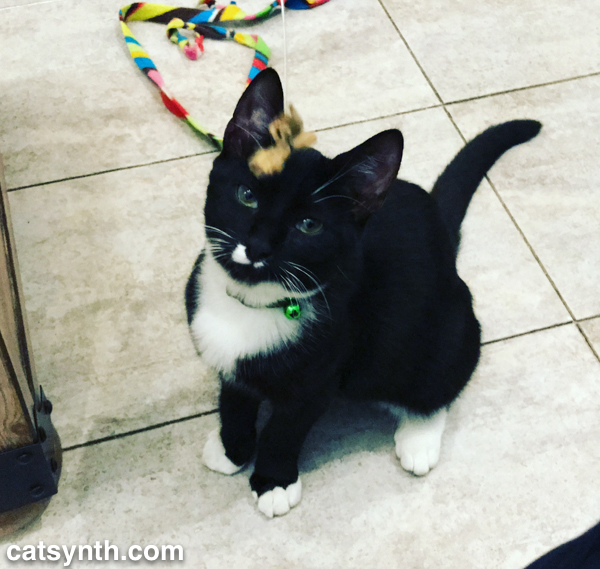
Burton was a big fellow and quite a character. A very friendly cat, he minded me a big of our friend Marlon, aka “the big
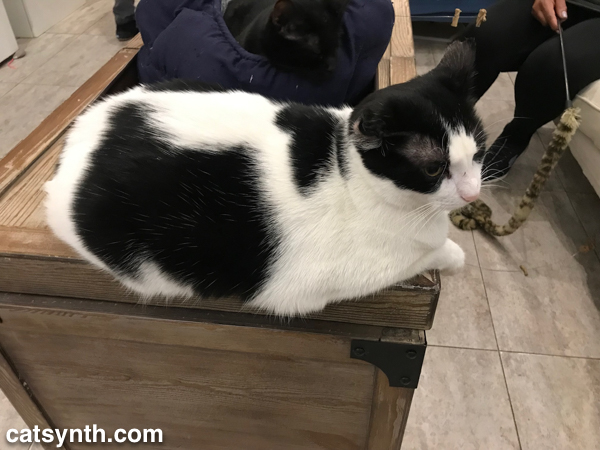
One of the hardest parts of traveling is leaving behind my cats. So having cat cafes is in the cities I visit is most welcome. The change to play with cats, cuddle them, and pet them can brighten the stormiest night.

The cats are clearly loved and well cared for, and there are rules for visitors that help ensure a safe and respectful space for them. Most of these fall under the rubric of “don’t be a jerk”, but there are also reminders of the fact that each cat has a different level of comfort with human behavior. If a cat is wary of being pet, respect their boundaries. If a cat needs a break from human interaction and wants to hide (and I can certainly sympathize with that), let them. And the result is a place filled with love among human and feline alike, and many cats have found their forever homes through visits to the cafe.
The Brooklyn Cat Cafe is run by the Brooklyn Bridge Animal Welfare Coalition, which is dedicated to finding homes for cats and other animals in their community. They opened the cafe in 2016.
By our one-year anniversary in May of 2017, the cafe had welcomed over 35,000 visitors — an average of over 95 visitors cuddling with our cats per day — and placed over 250 cats in permanent adoptive homes.
To find out more about the cafe, including visiting, adopting cats, and how to donate or volunteer, please visit their website.
We at CatSynth spent the better portion of a recent afternoon at the Whitney Museum of American Art, taking in the entire museum top to bottom. In the first of our reports, we start at the top with a survey of the work of artist Mary Corse.
The exhibition – Corse’s first solo survey at a major institution – focuses on her work in the mid-to-late 1960s as part of the West Coast Light and Space movement. Like many of her contemporaries, Corse was very interested in the use of light as a medium in itself, but her output of light works was almost entirely focused on flat art, i.e., the kind you can hang on walls. This made her a bit of an outlier in the movement.
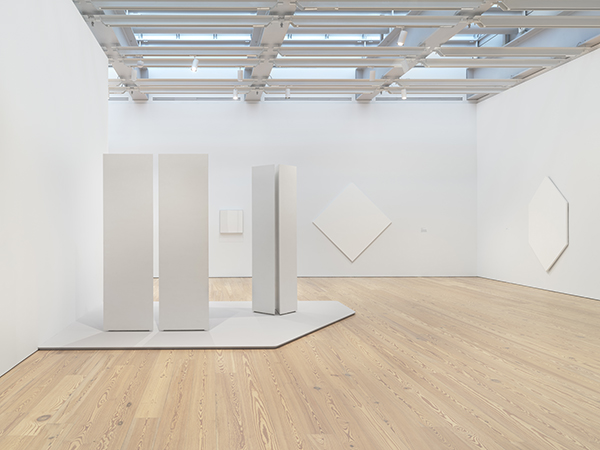
At first glance, it might be tempting to dismiss her work as “another round of white-on-white paintings from the 1960s.” But what makes it interesting is that light is at the center, rather than texture or pigment; and that she delved into emerging technologies and media to move beyond painting.
The most intriguing pieces in the exhibition were those that used plexiglass and lighting technologies. Corse studied physics and engineering in preparation for this body of work. We see this in her series where custom Plexiglass elements of different depths are juxtaposed next to one another allowing different amounts of light to pass through.

It is a subtle but fascinating set, and I found myself moving back and forth and looking from either side in my own exploration.
Corse also made her own light elements with a variety of technologies, including this piece from 1968 which employed an argon light and frequency generator, once again with her own custom plexiglass. I would have loved to have seen it in
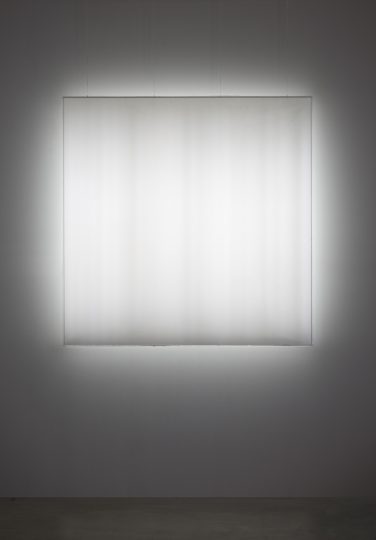
Looking at the bands within the light, I immediately found myself thinking of the amplitudes in a time-varying sound wave, or perhaps a frequency-domain spectrum. It would have been quite interesting to “hear” it.
The final set of work in the exhibition takes an abrupt turn, making the end of this period in Corse’s career. In 1970, she moved from Los Angeles to Topanga Canyon and embarked on her Black Earth Series of paintings.
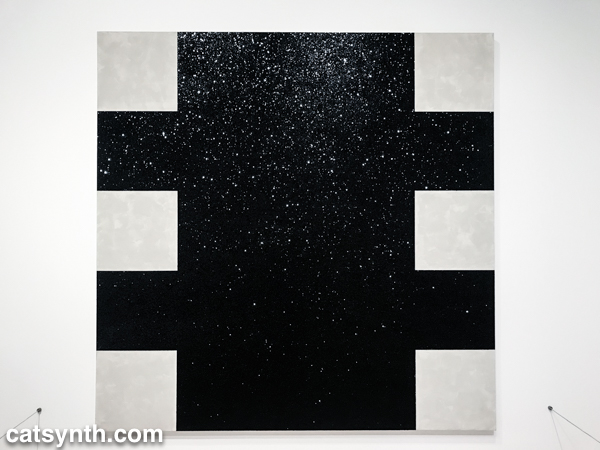
Beyond the obvious switch from white to black, there is a break from technology and a return to working with more traditional materials and textures. The “black” in the Black Earth Series are ceramics made in her own kilns. The glossy material is reflective, but also thick and covered in bumps and curves. This is in stark contrast to the plexiglass surfaces of her earlier work and makes a fitting bookend for the survey.
Unfortunately, the exhibition is closing this weekend, but if you happen to be in New York I recommend checking it out. It makes a fine escape from the overwhelm and sensory overload of holiday season.
We have a new video from Ok Housecat featuring Charlotte and a veritable orchestra of circuit bent instruments. Enjoy!
For more circuit-bent fun from Ok Housecat, please visit their website okhousecat.com and check out their YouTube channel.
Micha quietly enjoys a private performance on the Elektron Analog Keys synthesizer. By Moustafa Ismail via our Facebook page.
Nemo the cat plays a modular synth via Novation and Arturia controllers 😺🎛. From Stefano Girola (@squarewaves) on Instagram.